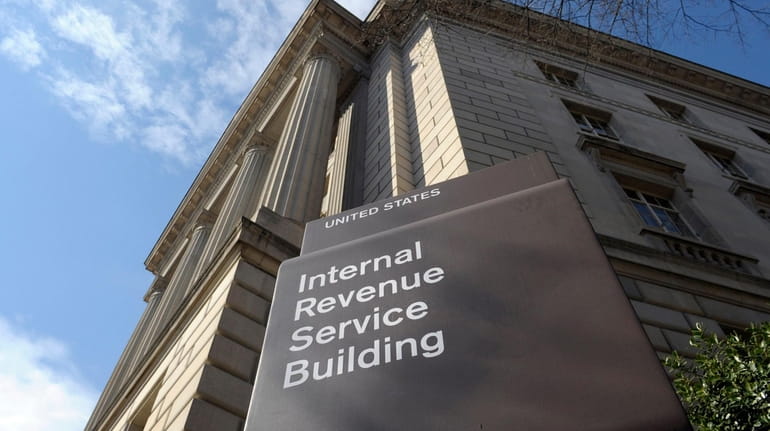Taking research and development tax credits

The Internal Revenue Service building in Washington. Credit: AP/Susan Walsh
If you have employees doing technical research and development, you may be able to take your business on the PATH to lower taxes.
The Protecting Americans from Tax Hikes (PATH) Act of 2015 made a federal R&D credit permanent, but this route to offset your tax liability is complex and often misunderstood.
In fact, an audit report released in December by the Treasury Inspector General for Tax Administration identified $11.8 million in potentially erroneous payroll-tax credit claims among tax returns for 2017 and suggests the IRS develop ways to identify small businesses that may not be legitimately taking it.
Still, experts claim the report was narrow and the R&D tax credit has a wider scope than just payroll expenses.
The report “had nothing to do with the vast majority of how the credit is claimed,” says Jonathan Forman, Northeast regional leader of R&D tax services at BDO USA LLP accountants based in the Stamford, Connecticut, office.
Many companies, he said, use the credit, which is calculated based on a company’s annual increased R&D expenditures, to offset their overall income tax liability.
The audit specifically focused on the payroll portion, a newer element of the PATH Act, he said. Under the PATH Act, beginning in 2016, eligible start-ups were allowed to offset up to $250,000 a year of the Social Security portion of their payroll taxes, he said. For eligibility, see https://tinyurl.com/y7wdyup3.
Keep in mind the audit reviewed only 1,467 businesses claiming $53.2 million in research credits tied to the payroll tax offset, says Forman. That's just a fraction of the $11 billion in R&D credits claimed by U.S. companies.
“This startup element was a new animal,” said Charles Goulding, president of R & D Tax Savers in Syosset, noting the original credit dates back to 1981. “It takes awhile for the tax community to understand how it works.” He and the Treasury IG both expect the IRS to move forward with a focus on credit compliance.
Still, eligible companies shouldn’t be deterred from taking the credit, said Goulding.
In general, expenses that could qualify for the credit include taxable wages of R&D workers and supplies required for their research, he said.
Qualified activities could include developing prototypes or software technologies or even environmental testing, said Jacob Goldman, vice president at R & D Tax Savers, which does research and extensive interviews of technical staff to document the credit for companies.
R&D activities must also meet a four-part test (see https://tinyurl.com/ybgjzncu), said Jeffrey Cohen, a tax practice leader at Grassi & Co. CPAs in Jericho. For example, the research must be undertaken to discover information technological in nature, and there must be a qualified purpose ( say, a new function or improved performance). A purely aesthetic change wouldn’t qualify, Cohen said.
He doesn’t find the credit is abused and said companies often aren’t aware they could have taken the credit or aren’t encouraged by their CPAs because of lack of knowledge.
“It’s a misunderstood credit,” says Stuart R. Shapiro, a partner at the Shalik, Morris & Co. accounting firm in Woodbury. Firms often relate the credit with major corporations with research labs, but he has clients, a ladies lingerie firm and an audio/visual systems integrator, that benefit from the credit annually getting a tax credit of about $300,000 each that offsets their income tax liability.
“It’s a valuable credit,” says Shapiro.
+Some activities that don’t qualify for the R & D credit:
*Consumer Surveys
* Management Studies
* Ordinary testing or inspection of materials or products for quality control
*Advertising and Promotional Expenses
*Efficiency surveys
Source: IRS

Updated now Newsday travel writer Scott Vogel took the ferry over to Block Island for a weekend of fun.
